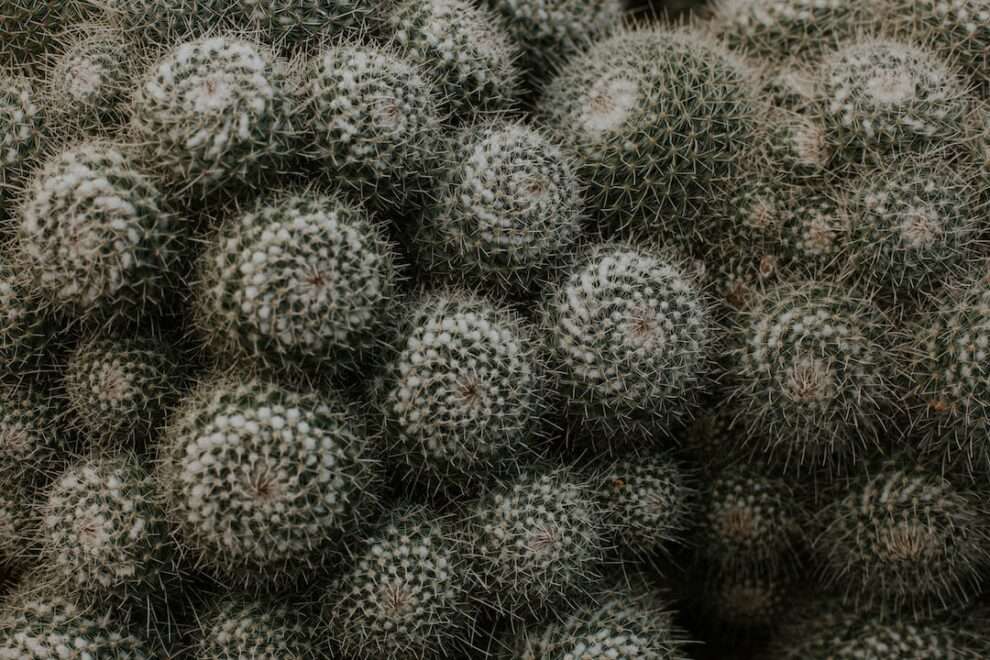Snake plants, also known as Sansevieria, have become increasingly popular in the succulent world. These unique plants are loved for their striking appearance and low maintenance requirements, making them a great choice for both beginner and experienced plant enthusiasts. Snake plants are native to West Africa and have been cultivated for centuries due to their ability to thrive in various conditions. In this article, we will explore the unique characteristics of snake plants, the different types available, how to care for them, their benefits for indoor air quality, how to propagate them, common problems that may arise, creative ways to display them, and why they make great gifts.
Unique Characteristics of Snake Plants
Snake plants have several unique features that make them stand out among other houseplants. One of their most distinctive characteristics is their long, upright leaves that resemble the shape of a snake, hence their name. These leaves can grow up to several feet tall and come in a variety of colors and patterns, including shades of green, yellow, and silver. Another unique feature of snake plants is their ability to tolerate low light conditions. While they prefer bright indirect light, they can also thrive in areas with minimal natural light, making them an excellent choice for offices or rooms with limited sunlight.
In addition to their striking appearance and adaptability to different lighting conditions, snake plants are also known for their low maintenance requirements. They are drought-tolerant plants that can survive long periods without water, making them perfect for forgetful or busy plant owners. Snake plants also have the ability to purify the air by removing toxins such as formaldehyde and benzene. This makes them an excellent choice for improving indoor air quality and creating a healthier living environment.
Types of Snake Plants
There are several different types of snake plants available, each with its own unique appearance and growth habits. The most common type is Sansevieria trifasciata, also known as the mother-in-law’s tongue or snake plant. This variety has long, sword-shaped leaves with green and yellow stripes. Another popular type is Sansevieria cylindrica, also known as the cylindrical snake plant. This variety has cylindrical leaves that grow upright and can reach impressive heights. There are also varieties with shorter, wider leaves such as Sansevieria laurentii, which has yellow margins on its leaves.
Caring for Your Snake Plant
Snake plants are known for their low maintenance requirements, but there are still a few key factors to consider when caring for them. When it comes to watering, snake plants prefer to be slightly underwatered rather than overwatered. It is best to allow the soil to dry out completely between waterings and then thoroughly water the plant until water drains out of the bottom of the pot. Overwatering can lead to root rot and other issues, so it is important to avoid keeping the soil constantly moist.
In terms of light requirements, snake plants can tolerate a wide range of lighting conditions. They prefer bright indirect light but can also thrive in low light areas. However, they may not grow as quickly or produce as many new leaves in low light conditions. It is important to avoid placing snake plants in direct sunlight, as this can scorch their leaves.
To maintain healthy growth, it is recommended to fertilize snake plants once or twice a year with a balanced houseplant fertilizer. During the growing season, which is typically spring and summer, you can also use a diluted liquid fertilizer every month or two. Snake plants are generally pest-resistant but can occasionally be affected by mealybugs or spider mites. If you notice any signs of pests, it is important to treat them promptly with an appropriate insecticide.
Benefits of Having Snake Plants in Your Home
In addition to their unique characteristics and low maintenance requirements, snake plants offer several benefits for your home and well-being. One of the most notable benefits is their ability to purify the air and improve indoor air quality. Snake plants are known for their ability to remove toxins such as formaldehyde, benzene, and xylene from the air, making them an excellent choice for homes or offices with poor ventilation or high levels of indoor pollutants.
Furthermore, snake plants have been found to reduce stress and promote relaxation. The presence of plants in indoor spaces has been shown to have a positive impact on mental health and well-being. Snake plants, with their calming green foliage, can help create a soothing and peaceful atmosphere in any room. They are also known for their ability to release oxygen at night, making them a great choice for bedrooms to improve sleep quality.
Propagating Snake Plants
Propagating snake plants is a relatively simple process that can be done through division or leaf cuttings. Division involves separating the plant into smaller sections, each with its own roots and leaves. This can be done when the plant has become too large for its pot or when you want to create new plants. To divide a snake plant, carefully remove it from its pot and gently separate the roots into smaller sections. Each section should have at least a few leaves and a healthy root system. Plant the divided sections in separate pots with well-draining soil and water thoroughly.
Another method of propagating snake plants is through leaf cuttings. To propagate snake plants from leaf cuttings, select a healthy leaf and cut it into several smaller sections, each about 2-3 inches long. Allow the cut ends to dry for a day or two to prevent rotting, then plant them in well-draining soil. Water lightly and place the cuttings in a warm, bright location but out of direct sunlight. After a few weeks, new roots should start to form, indicating that the cuttings have successfully rooted. At this point, you can treat them as mature snake plants and care for them accordingly.
Propagating snake plants is not only a great way to expand your collection but also a fun and rewarding process. It allows you to create new plants from existing ones and share them with friends or family members who may also appreciate these unique plants.
Troubleshooting Common Problems
While snake plants are generally easy to care for, they can still encounter some common problems. One of the most common issues is overwatering, which can lead to root rot and yellowing leaves. To prevent overwatering, it is important to allow the soil to dry out completely between waterings and avoid keeping the plant in standing water. If you notice signs of overwatering, such as mushy or discolored roots, it is best to repot the plant in fresh, well-draining soil and adjust your watering routine.
Another common problem with snake plants is pest infestations, particularly mealybugs and spider mites. Mealybugs are small, white insects that can be found on the leaves or in the soil. They feed on the plant’s sap and can cause stunted growth and yellowing leaves. Spider mites are tiny pests that spin webs on the leaves and can cause yellow or brown spots. To treat pest infestations, it is important to isolate the affected plant and treat it with an appropriate insecticide. You may also need to manually remove pests using a cotton swab dipped in rubbing alcohol.
To prevent future problems, it is important to provide proper care for your snake plant. This includes watering correctly, providing adequate light, and regularly inspecting the plant for signs of pests or diseases. It is also important to avoid placing snake plants in drafty areas or near heating vents, as this can cause stress and damage to the plant.
Creative Ways to Display Your Snake Plants
Snake plants are not only beautiful and easy to care for, but they can also be displayed in a variety of creative ways to enhance your home decor. One popular way to display snake plants is in hanging planters or macrame plant hangers. This allows the long, trailing leaves to cascade down and create a visually stunning display. Hanging snake plants near windows or in corners can add a touch of greenery to any room and make use of vertical space.
Another creative way to display snake plants is by grouping them together in different sizes and varieties. This creates a visually interesting arrangement and allows you to showcase the unique characteristics of each plant. You can place them on a shelf, side table, or plant stand to create a mini indoor garden. Mixing snake plants with other types of houseplants can also create a dynamic and diverse display.
For those who prefer a minimalist or modern aesthetic, snake plants can be displayed in sleek, contemporary planters or pots. The clean lines and architectural shape of snake plants complement modern decor styles and add a touch of sophistication to any space. You can choose pots in neutral colors such as white, black, or gray to create a cohesive and minimalist look.
Snake Plants as Gifts
Snake plants make excellent gifts for plant lovers due to their unique characteristics and low maintenance requirements. They are perfect for both experienced plant enthusiasts and beginners who may not have much experience caring for houseplants. Snake plants are known for their ability to thrive in various conditions, making them a great choice for people who may not have green thumbs or who travel frequently.
In addition to their low maintenance requirements, snake plants offer several benefits that make them an ideal gift. Their ability to purify the air and improve indoor air quality makes them a thoughtful gift for someone who may have allergies or respiratory issues. Snake plants are also known for their ability to reduce stress and promote relaxation, making them a great gift for someone who may be going through a challenging time or who could use a little extra self-care.
When giving a snake plant as a gift, consider pairing it with a stylish planter or pot to enhance its visual appeal. You can also include a care guide or instructions to help the recipient successfully care for their new plant. Snake plants are not only beautiful and beneficial for indoor spaces but also make meaningful and thoughtful gifts that can be enjoyed for years to come.
Conclusion
Snake plants are unique and versatile houseplants that offer several benefits for your home and well-being. Their striking appearance, low maintenance requirements, and ability to thrive in various conditions make them a popular choice among plant enthusiasts. Snake plants can purify the air, reduce stress, and promote relaxation, making them an excellent addition to any indoor space.
Whether you are a seasoned plant lover or just starting your collection, adding a snake plant to your home is a great way to enhance your decor and improve your indoor environment. With their unique characteristics and easy care requirements, snake plants are sure to bring beauty and tranquility to any room. Consider adding a snake plant to your collection or gifting one to a friend or loved one who may appreciate these remarkable plants.
If you’re interested in learning more about snake plants and their relationship to succulents, check out this informative article on The Ultimate Cheat Sheet on Ecology. It explores the various types of plants that fall under the succulent category, including snake plants, and provides valuable insights into their characteristics and care requirements. Whether you’re a beginner or an experienced plant enthusiast, this article is a must-read for anyone looking to expand their knowledge of succulents.

















Add Comment